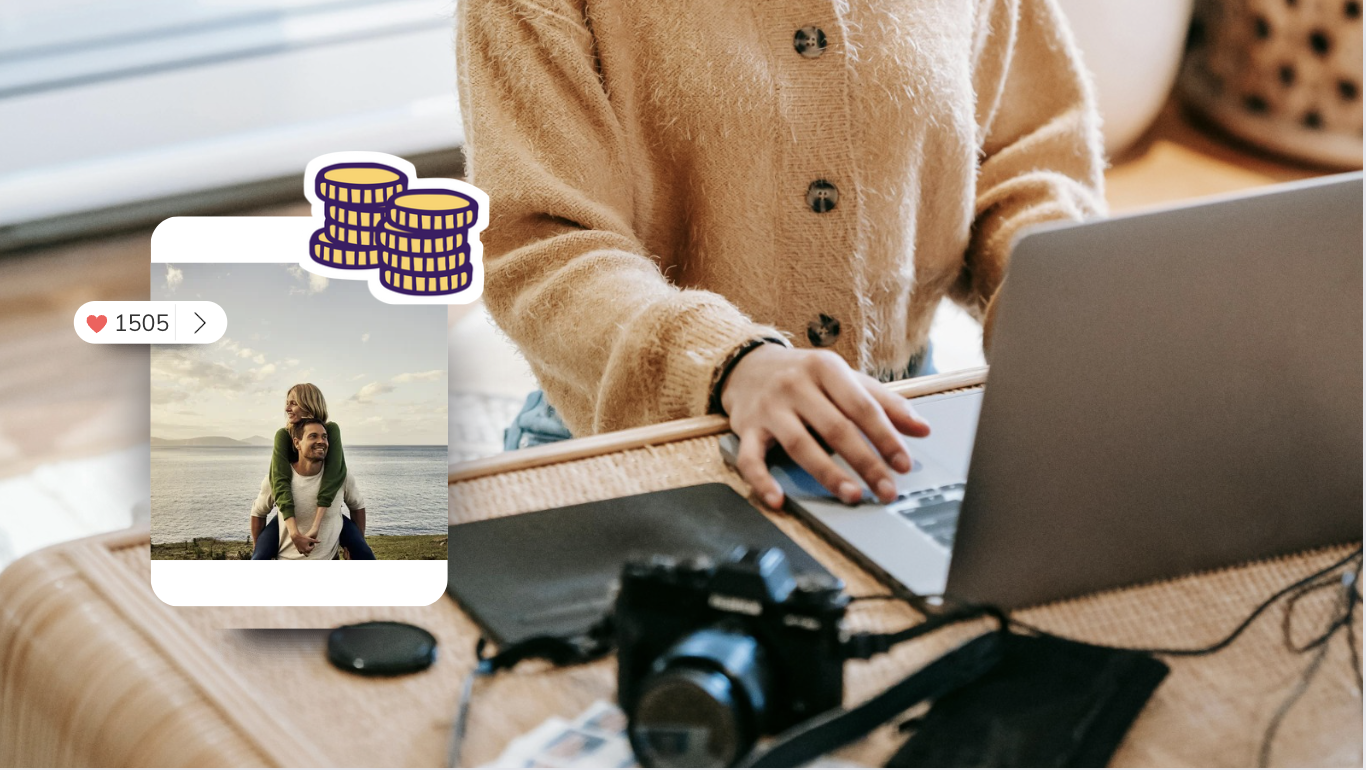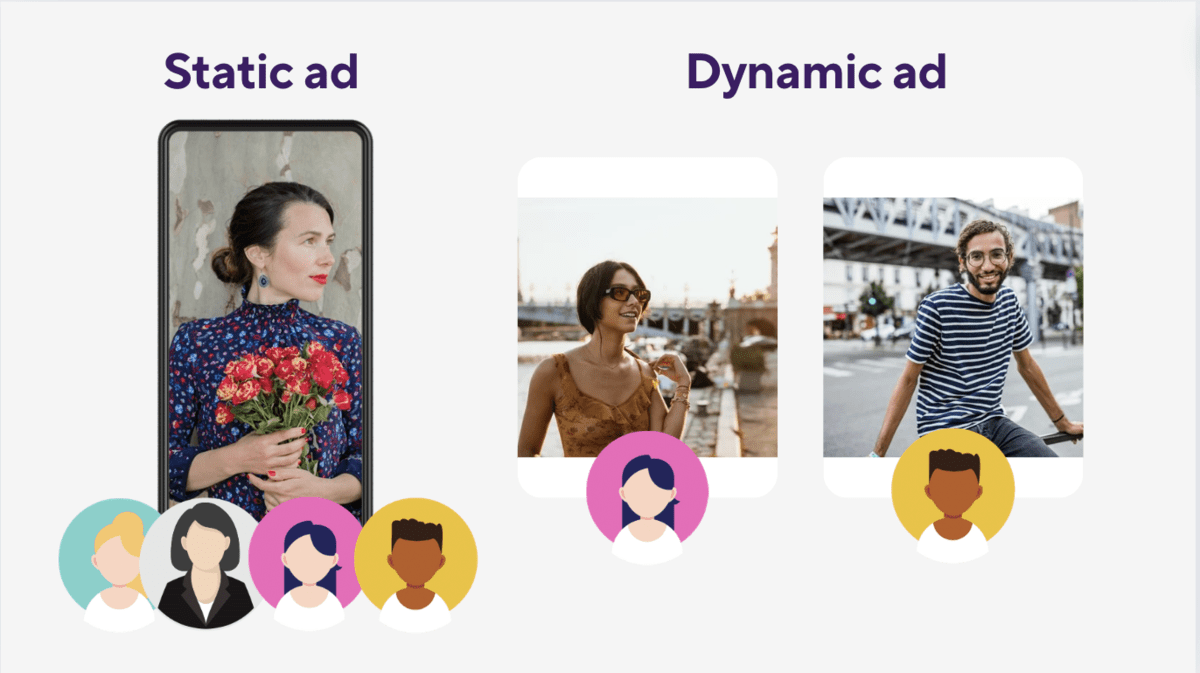Meta Ad Optimisation for Photographers: Maximise Your Budget

Previously, we've explored how to advertise on Meta from selecting the right ad formats to targeting and bidding tailored for your photography business. Now that your campaigns are running, it's time to shift focus from creation to optimisation!
In this next guide, we will go deeper into the important aspects of monitoring and refining your ads to ensure they deliver the best possible results to make the most of your advertising budget.
Why Bother Optimising Your Ads?
Effective advertising is not a set-it-and-forget-it task. Regular monitoring allows you to:
- Identify which ads perform best
- Understand audience behaviour
- Optimise your budget allocation
- Improve conversion rates
Overall, only through optimisation do you truly understand why your ads work or not. This analytical approach helps you improve the effectiveness of your current campaigns while providing valuable insights into your audience's behaviour and preferences. Without optimisation, you’re essentially guessing, and your advertising efforts might not reach their full potential!
Why Your Facebook or Instagram Ads Aren't Working & How to Fix Them
Running ads on Facebook and Instagram can be incredibly effective for photographers but your ads may not deliver the results you expect all the time. Understanding why your ads aren't working is the first step toward turning things around.
Thankfully, metrics exist! These invaluable tools provide insights into how your ads resonate with your audience, pinpoint where your strategy fall short, and identify necessary adjustments to optimise your results. Let's take a look at which metrics you should be paying attention to.
Low Click-Through Rate (CTR)
A low CTR indicates that few people are clicking on your ads despite a high number of views. It could be a sign that your ads might not be resonating well with your audience. Or that your ads might not be reaching the right people.
What Causes It & How to Fix
- Poor audience targeting
If your targeting is too broad, your ad will be shown to individuals who aren't interested in photography or simply don't need it at the moment.
Reevaluate your target audience. Are your ads shown to people who are genuinely interested in your photography services? Use Meta's advanced targeting options tools to narrow down your audience to those who have shown interest in photography, events, family portraits, etc.
- Unengaging creative content
If you're confident about your targeting, try reworking your ad visual and copy. In visual-first platforms like Instagram and Facebook, the quality and relevance of your ad creative are crucial.
Even with stunning visuals, your ad copy needs to be engaging and clear. If your CTA is unclear or weak, viewers may not feel compelled to click on your ad. Alternatively, experiment with different types of content. Consider using video content, behind-the-scenes looks, or client testimonials.
- Irrelevant ad placement
If ad placements are not set properly or are too broad, Meta tends to distribute ads across various placements such as reels, stories, and feeds. This can lead to inefficient use of your advertising budget and suboptimal performance.
Dušan Stojković, Growth Marketing Manager at Smiler, emphasises the importance of closely monitoring your ad placements.
"It's crucial to stay on top of where your ads are being placed and how different placements are performing," Stojković advises.
By analysing these insights, you can optimise your placements for the best results. He also highlights the importance of considering the creative style or asset type, ensuring that square formats don't appear in stories and story formats don't appear in the feed.
High Cost Per Click (CPC)
A high CPC indicates that you're paying too much for each click and your ad strategy might need some tweaking. Overspending on underperforming ads or spreading your budget too thin across too many campaigns can quickly eat into your budget without necessarily delivering good results.
What Causes It & How to Fix
- Broad or incorrect audience targeting
If your ads are too broadly targeted, they may be shown to people who aren't really interested in your product or service. Narrow down your audience. Focus on specific demographics or interests, and create Lookalike Audiences to reach users similar to your best clients.
- Inefficient budget allocation
Spreading your budget too thin across many campaigns can reduce the effectiveness of your ad spend. Small budgets tend to generate insufficient data for optimisation, leading to higher costs.
Start with a modest budget and gradually increase it based on performance. This will allow you to concentrate your budget on fewer, high-performing campaigns. Regularly review the performance of your ads and reallocate the budget from underperforming campaigns to those that deliver better results.
Peleg Shinar, Growth Marketing Specialist at Smiler, emphasises understanding the Meta Ad Sets' learning phase.
Each Ad Set needs to achieve 50 of its target events every week to complete this phase. Let’s break this down:
Choose your ad goal: For example, if you want clicks, your Ad Set needs 50 clicks in one week.
Monitor your performance: Once your ads are running, check your cost-per-click (CPC). If you chose a different goal, look at your cost-per-action instead.
Calculate your budget: If your CPC is €0.50, you’d need a weekly budget of €25 to reach 50 clicks (€0.50 x 50 = €25). This means ~€3.5 per day.
Adjust if needed: Don’t worry if your budget can’t achieve 50 events. You have options:
- Set an easier goal, such as views
- Work on improving your ads to get more clicks (higher click-through-rates)
Remember, this process helps Meta optimise your ad distribution effectively.
Poor Conversion Rate (CR)
A low conversion rate indicates that there's a disconnect between your ads and the audience they’re reaching. Many people click on your ads, but few complete the desired action (e.g., booking a session).
What Causes It & How to Fix
- Misaligned targeting
Your ad might be reaching the wrong audience. For instance, if you are a wedding photographer but your ads are being shown to people who are not interested in wedding photography services, your conversion rate will suffer.
Align your targeting with the specific action you want users to take. Thankfully Meta allows precise targeting. Target users based on specific interests or behaviours, such as those engaged in wedding-related groups or recently engaged couples.
- Unclear or mismatched landing page content
If the content on your landing page does not match the promise of your ad, users may feel misled. For example, if your ad promotes a free consultation call for wedding photography services but your landing page highlights portrait photography, users will likely leave without taking any action.
Ensure your ad and landing page messaging are consistent. The landing page should deliver exactly what the ad promises. Make it easy for visitors to understand what you want them to do. Use clear, compelling CTAs that guide users toward your desired action-whether it's booking a call or a session.
High Bounce Rate
This metric suggests that users click on your ad but leave your landing page quickly without interacting further.
What Causes It & How to Fix
- Click-bait ads
Similar to the scenario above, you need to make sure your ad and landing page messaging are consistent. Avoid misleading content that frustrates users.
- A poor landing page experience
Design a mobile-friendly landing page that loads quickly and provides relevant content. Make sure to regularly update it to reflect new offers or recent work.
Low Engagement Rates
Engagement rate is one of the most direct indicators of your ad's content performance. Low engagement rates point out that your ad content is not resonating with your audience.
What Causes It & How to Fix
- Low-quality visuals
If your ads receive few likes, comments, shares, or saves. It could be due to low-quality images, irrelevant content, or boring visuals that can cause users to scroll past your ads.
Invest in high-quality visuals that showcase your best work. Alternatively, experiment with different types of content. Consider using video content, behind-the-scenes looks, or client testimonials...
- Irrelevant or boring content
Keep your ad copy engaging and clear. Online users have short attention spans. Concise messages ensure that your main points are communicated quickly and effectively.

Evaluating Video Ads
Video ads are a powerful tool on visual-first platforms like Facebook and Instagram, but their success hinges on specific metrics.
Hook Rate
The hook rate indicates the percentage of viewers who watch the first few seconds of your video. You want to have a high hook rate to show that your video captures attention quickly.
Start with an engaging opening that grabs viewers’ attention. Use interesting visuals or questions to pique interest right away!
View-Through Rate
This metric indicates the percentage of viewers who watch your video until the end. A high view-through rate suggests that your content is engaging and keeps the viewer interested.
If you want to have a high view-through rate, focus on keeping the content engaging throughout - which is possible with a message that's clear and consistently valuable.
Video Engagement Rate
Video engagement rate measures likes, comments, shares, and other interactions with your video. High engagement indicates your video resonates with your audience and viewers are reacting to it.
Encourage interactions by asking questions, and prompting viewers to comment, like or save.
Conversion Rate
Conversion Rate is one of the most important metrics you should be looking at. It indicates the percentage of viewers who take the desired action after watching your video (e.g., clicking a link, or filling out a form).
High conversion rates show your video effectively drives desired outcomes. It's always recommended to include clear, compelling calls to action (CTAs) within your video. The purpose is to make it easy for viewers to take the next step.
Budget Issues
A good budget allocation can make or break your Facebook and Instagram ads. Misallocation can lead to wasted spend or underperformance. Let's explore what are signs that your budget allocation is not correct.
What Causes It & How to Fix
If your CPC is significantly higher than the average for your industry or your historical performance, it might indicate that you're overspending on underperforming ads or spreading your budget too thin across too many campaigns.
Start with a modest budget and gradually increase it based on performance. Use Meta's budget recommendations and bid strategies to optimise your spending.
If your ads stop showing before the campaign period ends, it's a sign that your budget is running out too quickly and you should adjust your budget pacing. Consider setting a lower daily budget or using a lifetime budget to allow Meta to optimise spending.
Ad Fatigue
Ad fatigue happens when your target audience becomes overly familiar with your advertisements, leading to a decline in engagement and effectiveness. Essentially, people start to tune out your ads because they've seen them too many times, causing a drop in click-through rates (CTR) and conversions.
What Causes It & How to Fix
- Overexposure and stale ad creatives
Showing the same ad to the same audience too frequently or using repetitive visuals, messages, and formats can lead to ad fatigue.
Regularly changing your ads helps keep the audience engaged and interested. To overcome ad fatigue, you can create several variations of your ads with different visuals and copy in batches. Even small changes in wording can make a significant difference in maintaining audience interest.

Ignoring Mobile Optimisation
A significant portion of users access Facebook and Instagram on mobile devices. Non-optimised ads and landing pages will likely result in missed opportunities.
What Causes It & How to Fix
- Non-mobile-friendly design and slow-loading pages
Living in a mobile-first world, it's crucial to make sure that your ads are optimised for smaller screens. This means that both your visuals and texts should be easily readable on mobile devices.
If your page is taking forever to load, the visitors will leave after a few seconds. Optimise your landing page for speed by compressing images and using tools like Google PageSpeed Insights to identify and fix issues.
Conclusion: Ditch the guesswork!
When you pour your heart and soul into your profession, trying to attract clients who truly appreciate your style can feel like an uphill battle. But the good news is Meta Ads can be your secret weapon to getting more eyes on your work!
By following these optimisation strategies, you can ditch the guesswork and start reaching ideal clients who'll book you on the spot. With a strategic approach, killer visuals, and a little data magic, you'll be stretching your ad budget further than ever before.
What's next?
Now that you know how to start advertising on Facebook and Instagram and how to optimise your campaigns to get the most out of your investment, you might be interested in learning about SEO as well. If so, give our practical SEO guide a read.
For more photography marketing tips, browse the growing collection of articles on our blog. You'll find useful tools, techniques, and best practices, with many insights straight from the mouths of successful professional photographers!
If you're looking for a way to get more clients and run your business in a more optimally, you might want to check out the Smiler Photographer Suite and see how it can improve your photography business!


